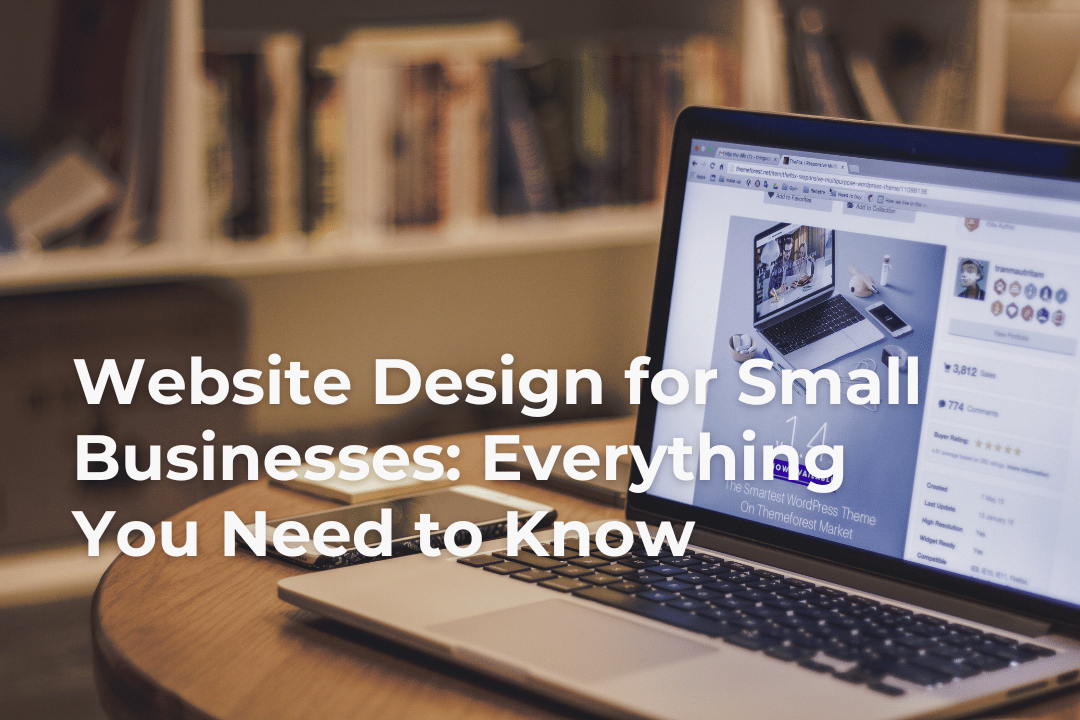Do small businesses really need a website?
Yes, it is important for businesses to have a professionally designed website, even more so for small businesses.
In today’s digital age, a professionally designed website is like a virtual storefront, a place where potential customers can learn about your products and services, and ultimately decide whether to engage with your brand.
This blog post will guide you through everything about website design for small businesses, ensuring your site stands out and drives growth.
11 best website design practices for small businesses
- Use a reader-friendly font
- Keep your website color scheme limited
- Use high-quality photos
- Optimize for mobile and tablet
- Use white space effectively
- Make sure your website is easy to navigate
- Make your call to action stand out
- Test call to action placements on website
- Prevent cluttering and over stuffing
- Include persuasive headers
- Include testimonials
1. Use a reader-friendly font
Choosing the right font is essential for readability and branding. Stick to clean, simple fonts that align with your brand’s personality. Popular options include Arial, Helvetica, and Times New Roman.
2. Keep your website color scheme limited
A consistent color scheme enhances brand recognition and user experience. Use your brand colors strategically across your site. For instance, Cadbury’s purple is instantly recognizable and reinforces its brand identity.
3. Use high-quality photos
High-quality images can significantly impact user engagement. Showcase your products with clear, professional photos. Tesla’s website is a great example, featuring stunning images that capture the essence of their innovative products.
4. Optimize for mobile and tablet
With over 50% of web traffic coming from mobile devices, ensuring your website is mobile-friendly is non-negotiable. Use responsive design techniques to provide a seamless experience across all devices.
5. Use white space effectively
White space, or negative space, prevents your website from feeling cluttered and overwhelming. It helps guide users’ attention to the most important elements on your page.
6. Make sure your website is easy to navigate
Simplify navigation to help users find what they need quickly. Clear menus, logical page hierarchies, and intuitive links enhance user experience and reduce bounce rates.
7. Make your call to action stand out
CTAs are crucial for conversions. Use contrasting colors, compelling copy, and strategic placement to draw attention.
8. Test call to action placements on website
Experiment with different CTA placements to find what works best. A/B testing can help you determine the optimal location for maximum clicks and conversions.
9. Prevent cluttering and over stuffing
Avoid overwhelming your visitors with too much information. Focus on essential content and present it in a clean, organized manner.
10. Include persuasive headers
Headers help structure your content and guide users through your site. Use clear, descriptive headers to make your content skimmable and engaging.
11. Include testimonials
Customer testimonials build trust and credibility. Showcase positive reviews and success stories to persuade potential customers.
How to get a website for small businesses
- Pick a domain name
- Register for a hosting service
- Start designing and creating engaging web pages
- Review before publishing
- Keep your website up to date
1. Pick a domain name
Choose a domain name that reflects your business. It should be easy to spell, memorable, and relevant to your industry. Use keywords to boost SEO and consider using a domain name generator for ideas.
2. Register for a hosting service
Select a reliable hosting provider. Look for features like SSL certificates, free domains, and tech support. All-in-one solutions like WordPress and Squarespace can simplify the process.
At Pillars Media, we offer free domain registration when you sign up for our annual hosting services.
If you’re interested, contact us to learn more.
3. Start designing and creating engaging web pages
Use a web design platform to create your site. Incorporate essential pages like a homepage, about us, services, contact, and blog. Ensure your design is visually appealing and user-friendly.
Click to learn more about the different types of website design.
4. Review before publishing
Thoroughly check your site for errors, broken links, and filler content. Test its performance across different browsers and devices. Connect your site to Google Analytics to monitor its performance.
5. Keep your website up to date
Regularly update your content, products, and promotions. It is important to make sure your website content and designs are up to trend. An outdated website will harm your business’ credibility and image.
Click here to learn more: Top Malaysia Website Design Trends in 2024
Importance of having a professional website for small businesses
- Online presence
- Credibility
- Marketing platform
- Customer engagement
- Information sharing
- Sales channel
- Brand identity
- Analytics
- Competitive advantage
- Cost-effective advertising
1. Online presence
A website ensures your business is visible online around the clock. Unlike a physical store, which has limited operating hours, a website is accessible 24/7, allowing potential customers to learn about your products and services at their convenience. This continuous availability means that your business can attract and engage customers even outside of regular business hours, broadening your reach and increasing potential sales.
2. Credibility
A professional website builds trust with potential customers. In today’s digital age, consumers expect businesses to have an online presence. A well-designed, informative website serves as a testament to your business’s legitimacy and professionalism. It can include customer testimonials, case studies, and professional affiliations, all of which contribute to building credibility and trust with your audience.
3. Marketing platform
A website acts as a central hub for all your digital marketing efforts. It supports a variety of strategies including Search Engine Optimization (SEO), Pay-Per-Click (PPC) advertising, and content marketing. Through SEO, your website can rank higher in search engine results, making it easier for potential customers to find you. PPC campaigns can drive targeted traffic to your site, while content marketing, such as blog posts and videos, can engage and educate your audience, establishing your authority in your industry.
4. Customer engagement
A website provides a direct channel for interacting with your customers. Features such as contact forms, live chat, and social media integration allow customers to reach out with questions, provide feedback, and engage with your content. This interaction fosters a sense of community and loyalty among your customers, enhancing their overall experience with your brand.
5. Information sharing
Your website serves as a comprehensive resource for sharing important information about your products and services. It allows you to provide detailed descriptions, pricing, availability, and any other pertinent information that customers might need to make informed purchasing decisions. This transparency can help reduce customer inquiries and improve satisfaction.
6. Sales channel
With e-commerce capabilities, your website can serve as an additional sales channel. You can sell products directly to customers, manage orders, and process payments online. This not only expands your customer base beyond your local area but also provides a convenient shopping experience that can drive sales and revenue growth.
7. Brand identity
A website helps establish and strengthen your brand identity. Through consistent use of logos, colors, and messaging, your website can convey your brand’s personality and values. This consistent branding across all touchpoints reinforces your business’s image and helps differentiate you from competitors.
8. Analytics
Websites provide valuable insights into customer behavior and preferences through analytics. Tools like Google Analytics can track various metrics, such as visitor numbers, page views, bounce rates, and conversion rates. This data helps you understand how users interact with your site, what content they find most engaging, and where improvements are needed. These insights enable you to make data-driven decisions to enhance your website and marketing strategies.
9. Competitive advantage
Having a website gives you a competitive edge over businesses that lack an online presence. A professional, well-optimized website can attract more customers, showcase your unique selling points, and highlight the benefits of choosing your business over others. In a competitive market, being visible and accessible online can make a significant difference in attracting and retaining customers.
10. Cost-effective advertising
Compared to traditional advertising methods, maintaining a website is a cost-effective way to reach your audience. Online marketing strategies such as SEO, content marketing, and social media promotion often cost less and offer higher returns on investment. A website allows you to create targeted marketing campaigns, track their effectiveness, and adjust your strategies in real time, maximizing your advertising budget and improving your overall marketing efficiency.
Pillars Media, website design agency in Malaysia
To summarize, having a well-designed website is essential for small businesses looking to grow and thrive in the digital landscape.
At Pillars Media, we specialize in creating stunning, user-friendly websites that drive results. With our expertise in digital marketing and website design services, we’ve helped clients globally achieve their business goals.
Contact us today to start your journey toward a powerful online presence.

